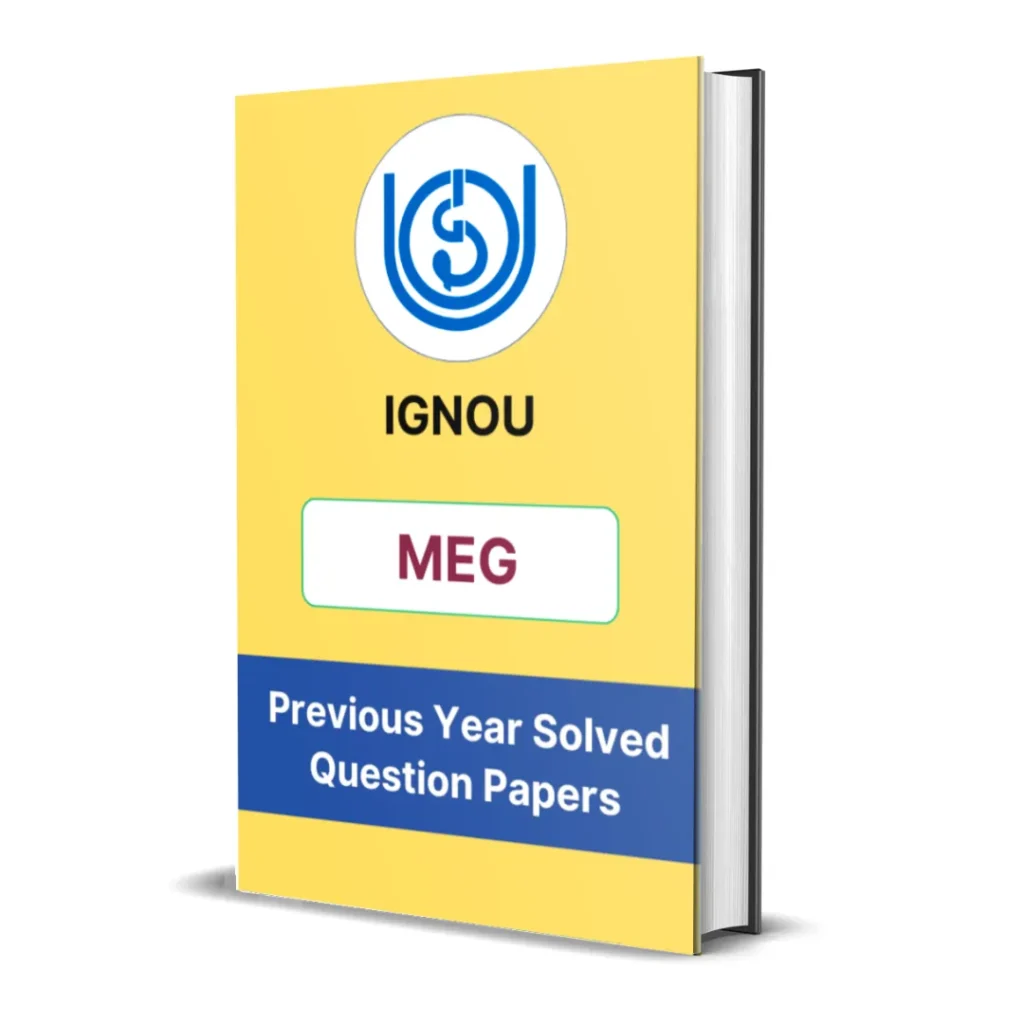MEG-03 Block 7 Summary | James Joyce: A Portrait of the Artist
- Last Updated On August 13, 2025
Table of Contents
Here you will get the detailed summary of IGNOU MEG 3 Block 7 – James Joyce: A Portrait of the Artist as a Young Man
We have provided the summary of all units starting from unit 1 to unit 5.

Introduction
Block 7 of the IGNOU MEG-3 course focuses on James Joyce’s A Portrait of the Artist as a Young Man, a landmark in modernist literature that traces the intellectual, spiritual, and artistic awakening of Stephen Dedalus, Joyce’s semi-autobiographical protagonist. This block consists of five units that together examine the novel’s historical and cultural contexts, its formal features, the development of Stephen’s character, Joyce’s experimental narrative techniques, and the wide range of critical responses the novel has generated. It guides readers in understanding not only the novel’s structure and themes but also its significance in literary history.

Unit 1 – Contexts
This unit introduces the historical, cultural, and biographical background essential to understanding the novel.
Joyce wrote the novel in the early 20th century, a period marked by significant political and social unrest in Ireland. The Irish struggle for independence, the dominance of the Catholic Church, and the debates over Irish identity form the backdrop of Stephen’s coming of age. The novel reflects the tension between Irish nationalism and individual freedom, as Stephen gradually distances himself from the ideologies and institutions that shape his early life.
The unit also explains Joyce’s own life and how closely it mirrors that of Stephen Dedalus. Key events such as religious schooling, the decline of his family’s fortunes, and the rejection of Catholic orthodoxy are rooted in Joyce’s personal experience.
This unit also places Portrait within the modernist movement, highlighting how Joyce, like other modernists, broke from 19th-century realism to explore subjectivity, fragmented narrative, and interior consciousness.

Unit 2 – Genre, Overall Structure and Point of View
This unit explores the novel’s form and narrative strategy.
Portrait is often described as a Bildungsroman—a novel of formation or education. However, it diverges from traditional models by focusing not on a linear progression but on fragmented moments of epiphany and internal conflict. The structure is divided into five chapters, each representing a stage in Stephen’s intellectual and emotional development.
The unit emphasizes the novel’s narrative perspective. Rather than using an omniscient narrator, Joyce employs a technique often called free indirect discourse, where the narration merges with the character’s inner voice. As Stephen grows older, the language of the narrative evolves to match his maturing consciousness.
This shifting point of view draws readers deeply into Stephen’s subjective experience, allowing them to witness his thoughts, doubts, and revelations from the inside. The unit shows how this technique marks a major innovation in the novel form.
Unit 3 – Stephen’s Growth and Personality
This unit focuses on the psychological and intellectual development of Stephen Dedalus.
Stephen is introduced as a sensitive and imaginative child, shaped by his family, religious upbringing, and school environment. Over time, he becomes increasingly disillusioned with the institutions that have defined his early life:
-
Religion: Stephen initially embraces Catholicism, even considering priesthood. But eventually, he rejects religious doctrine, believing it restricts his freedom and creativity.
-
Nation: He also distances himself from Irish nationalism, unwilling to subordinate his individual identity to collective ideals.
-
Family and Class: His family’s financial decline and political arguments at home expose him to the failures of authority and the limitations of loyalty.
Through these stages, Stephen experiences several “epiphanies”—moments of insight that help him understand his artistic calling. By the end of the novel, he declares his intention to “forge in the smithy of my soul the uncreated conscience of my race,” asserting his identity as an artist independent of society’s expectations.
This unit captures the core theme of the novel: the formation of a self-aware and autonomous individual, striving for artistic expression and intellectual integrity.

Unit 4 – Technique
This unit examines Joyce’s innovative stylistic techniques and literary experimentation.
Key features discussed include:
-
Stream of Consciousness: Joyce uses this technique to depict the inner life of Stephen, capturing his thoughts, memories, and sensory experiences in a fluid, often nonlinear manner.
-
Language Shifts: The novel’s language evolves alongside Stephen’s consciousness. Early sections mimic a child’s speech patterns, while later passages reflect more complex philosophical and artistic concerns.
-
Symbolism and Imagery: The novel is rich in symbols—water, birds, flight, and nets—that reflect Stephen’s emotional and psychological states. For instance, the image of flight symbolizes Stephen’s desire for escape and artistic freedom.
-
Epiphany: Joyce defines this as a moment when “the soul of the commonest object… seems to us radiant.” These moments of sudden insight punctuate Stephen’s journey.
This unit underlines how Joyce’s technique serves his subject: the growth of a consciousness. The form and content are inseparable, with style itself becoming a vehicle for meaning.
Unit 5 – Critical Perspectives: A Brief Selective Overview
The final unit surveys major critical interpretations of A Portrait of the Artist as a Young Man, reflecting the novel’s rich and varied reception.
Different schools of criticism have offered distinct readings:
-
Formalists and Modernists praise the novel’s structure and stylistic innovations.
-
Psychoanalytic Critics explore Stephen’s personality through Freudian concepts—especially his relationships with father figures, sexuality, and repression.
-
Postcolonial Critics examine how Stephen navigates colonial Irish identity and his rejection of nationalistic ideologies.
-
Feminist Critics often note the marginal role of women in the novel and analyze Stephen’s complex attitude toward female figures such as his mother and E.C.
-
Religious and Philosophical Readings focus on Stephen’s rebellion against the Catholic Church and his search for meaning through aesthetics and personal vision.
The unit concludes by noting that Portrait remains an open and provocative text, rewarding multiple interpretations and encouraging readers to engage with its ambiguities.